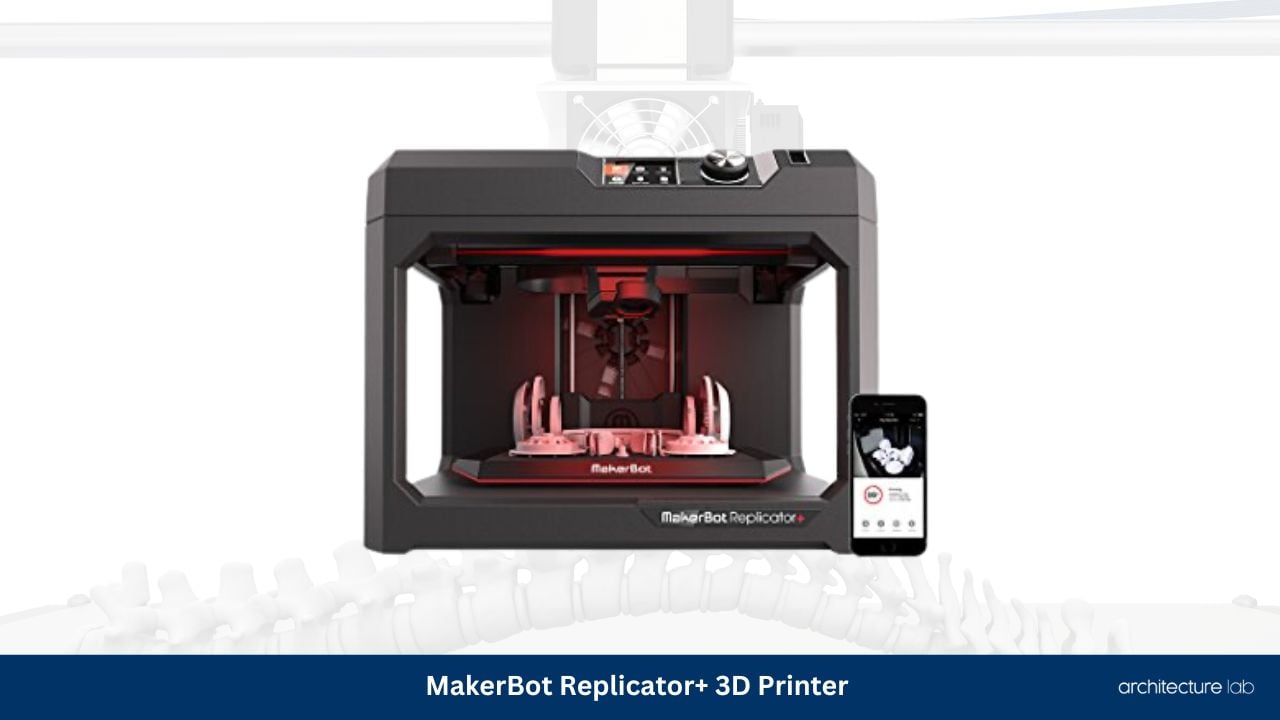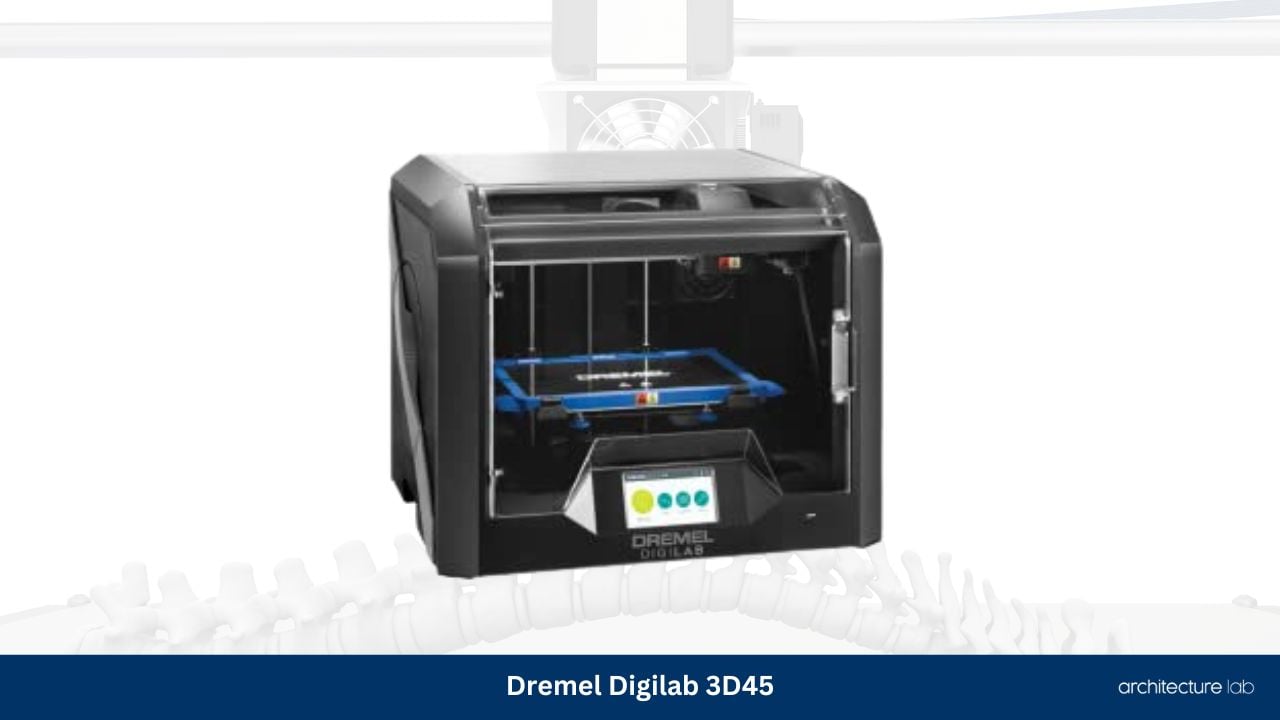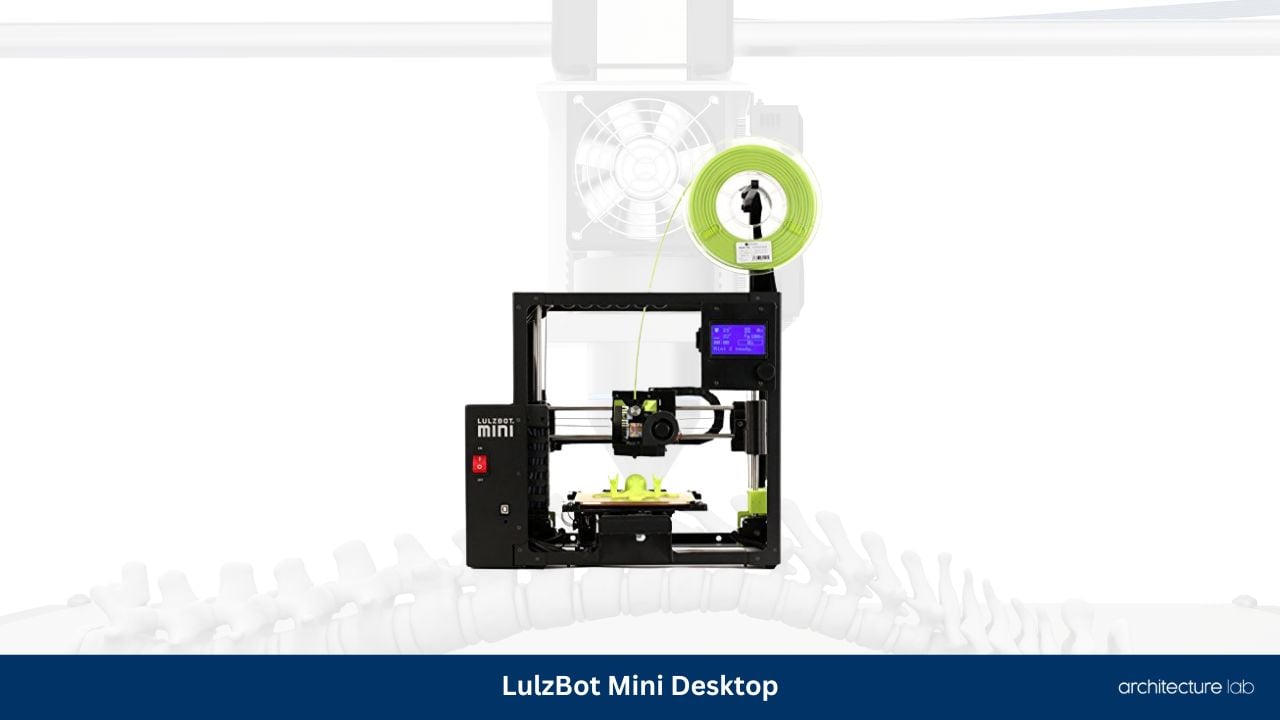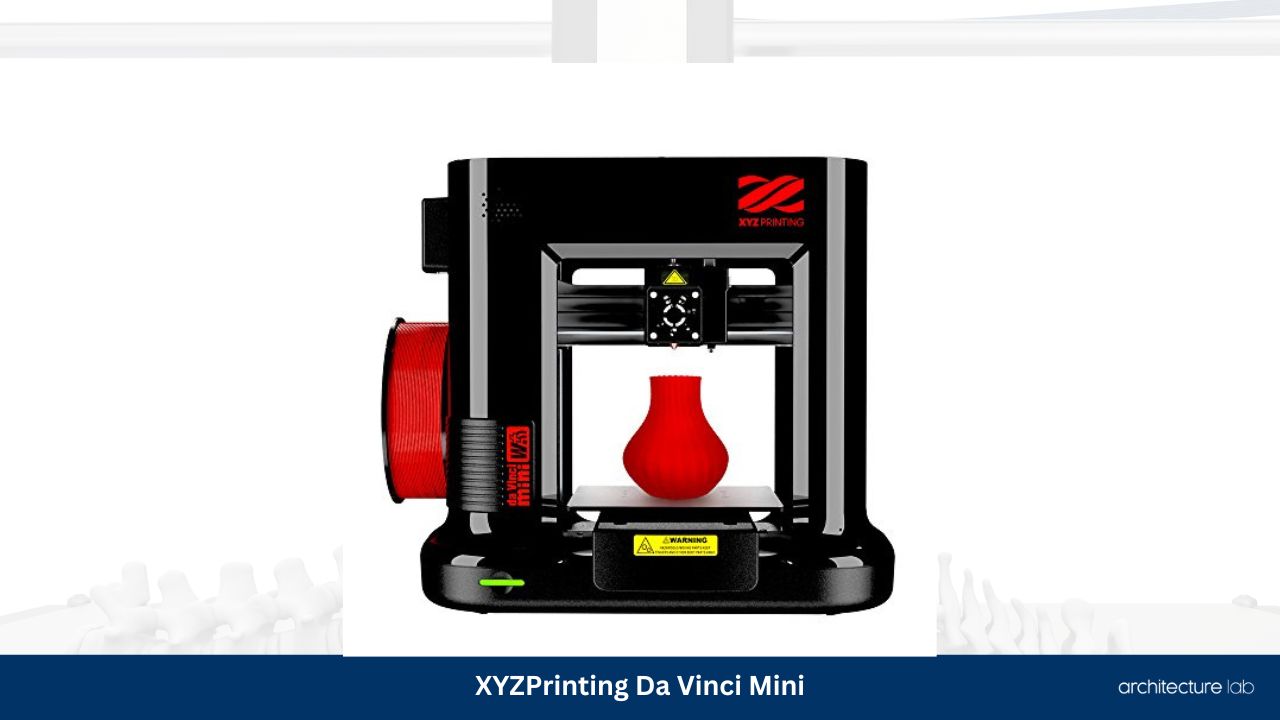The right 3D printer can be an absolute godsend for architects.
Using a 3D printer saves a lot of time in the initial phases of creation and design. In the initial stages, a lot of different concepts are tested out, and as a result, multiple iterations are required.
Having a 3D printer to print those models can allow multiple iterations performed exceedingly fast. Making a model of a structure was a process that used to take weeks earlier. Now it’s just a matter of a few hours.
They are also cost-effective. Some estimates say you can save up to 75% more money by using 3D printers instead of traditional techniques. This is because the models are printed out of a single plastic material, keeping costs to a minimum.
3D printers are also capable of producing exceptionally detailed and intricate structures. This capability comes in particularly useful when you need to dazzle a potential client at a sales meeting or a presentation.
That’s why we have compiled this list of the best 3D printers for architects.
Best 3D Printers for Architects
Here is the list of the 5 best 3D printers for architects that you can use to create detailed and complex models of structures, buildings, and other architectural designs.
1. MakerBot Replicator+ 3D Printer – Best for Architectural Designs
The MakerBot Replicator has been designed for more precise, reliable, and faster printing. It is sturdy, easy to use, and has a huge amount of versatility because of the MakerBot print software you use with this product. Designed for architects and engineers, we think this is an excellent choice of printer.
Experience
The MakerBot Replicator prints 30% faster than previous models and has a much larger print volume as well. They have re-engineered and improved the hardware as well, with a redesigned gantry and Z-stage. All the hardware has gone through an intensive quality control check for many thousand hours.
What we really like about this product is its seamless integration with the MakerBot print software and MakerBot Mobile. This software allows you to find, prepare new designs, and manage and share all of your prints. You can make your own designs or just use a model from their online library.
This software also lets you connect to the built-in camera inside the printer, which lets you monitor progress while you’re away from your computer. It allows cloud functionalities as well.
The MakerBot Smart Extruder has automatic jam detection and out-of-filament notifications. MakerBot SlatePLA Filament Bundle is as secure as they come and makes for prints high in tensile and flexural strength.
What We Like
- Rigorous quality testing
- MakerBot Print Software integration
- Large build volume & high-speed printing
- Great customer support
- Access to millions of online designs
What We Don’t Like
2. Dremel Digilab 3D45 – Best for Engineering Applications
One of the most popular choices of 3D printers out there, it has won several awards, and it is easy to see why. It has every feature you can think of in a printer included in it and then some more. Designed for engineers by its parent company (Bosch) this is indeed a great choice, as testified by hundreds of satisfied customers.
Experience
What we really enjoyed about this product is the host of things they offer along with just the printer:- a 1-year warranty, stellar customer support, UL safety certification, free desktop, and cloud-based slicing software, and also one nylon and one eco-ABS filament roll. That’s an awful lot of perks for just a 3D printer.
The build volume is a very large 6. 7″ x 10″ x 6″. The design is a very sturdy plastic which provides for enhanced security and less warping. It also includes a carbon and particulate filter.
There are no compromises when it comes to reliability. Sensor technology makes this extruder function as smooth as silk without ever clogging up.
But what is by far, the best feature is its filament-recognizing technology. This technology automatically updates extruder and build plate temperatures, along with print speeds depending on the kind of filament being used.
The glass plate can heat up to 100 degrees Celsius, and the full metal 0.4mm nozzle can go up to a whopping 280 degrees Celsius. This level of heat easily allows it to print nylon and ABS.
It has a semi-automatic leveling technology for easier calibrations and greater accuracy. The 5-inch full-color touchscreen lets you precisely level the plate in real-time, with just turning a knob.
What We Like
- WIfi Enabled for Cloud Printing
- HD camera for monitoring
- Unsurpassed reliability
- Large build volume
- High heat generating capability
- Filament recognizing technology
What We Don’t Like
3. LulzBot Mini Desktop 3D Printer – Best for Versatility & Customization
This is a desktop 3D printer that literally looks like a desktop CPU. This model has a lot of versatility it can be used with any 3D printing software program, and it has open-source hardware. All this means you’re free to use this 3D printer any way you like. This opens up a world of possibilities.
Experience
What we think is the best feature of this printer is the self-leveling and self-cleaning nozzle. Each print starts with a nozzle cleaning and probing sequence that guarantees a neat and perfectly smooth first layer.
Next up comes the build volume of 6in x 6in x 6.2in. There’s a large range in layer resolution as well. It can be as fine as only 50 microns, and it can also be as coarse as 500 microns. All of it depends on the geometry and speed requirements.
The all-metal hexagon hot end provides temperatures of 300 degrees Celsius and also as low as 120 degrees Celsius. Active heat sinks ensure the heat stays where you need it to be. The print speed reaches a maximum of 275mm^3/sec at 0.18 mm layer height.
You can even take out the tool head and plug in different print heads for printing on a variety of materials, even filaments that are mixed with real wood, stone, or metal. We find this functionality to be astounding.
What We Like
- High temperatures on the hot end
- Large build volume
- Heated printing surface for better adhesion
- One year warranty
- Self-cleaning nozzle
What We Don’t Like
4. Anycubic Kobra Max 3D Printer, Smart Auto Leveling
Experience
We found the Anycubic Kobra Max to be an exceptional 3D printer specifically because of its large print bed and open design. This allows for the creation of large-scale models and the flexibility architects need for printing buildings with unique proportions, such as skyscrapers.
The Kobra Max also stands out due to its innovative features, such as filament detection, which ensures the printing process isn’t interrupted when the material runs out. The device can pause the process, allowing users to resume printing without errors after refilling the filament.
Furthermore, this machine has an impressive printing speed of up to 180 mm per second, making it highly efficient to handle complex projects. Its automatic calibration feature not only adds to its efficiency but also enhances precision, ensuring high-quality prints.
While the open design is attractive due to its versatility, it may not be suitable for some users who require an enclosed design for maintaining controlled environments or preventing external contaminants.
Additionally, the layer resolution could be improved, allowing finer detail and smoother finishes in the final print.
What We Like
- Large print bed for creating intricate models
- Smart filament detection to prevent interruptions during printing
- High printing speed of 180 mm per second
- Automatic calibration for enhanced precision and efficiency
What We Don’t Like
5. XYZPrinting Da Vinci Mini Wireless 3D Printer
The XYZPrinting Da Vinci Mini Wireless 3D Printer might be a compact offering in the world of 3D printing, but don’t let its small stature fool you. This 3D printer has been designed to cater specifically to architects who require a high-quality, efficient, and accessible printing solution that caters to space constraints.
Experience
This 3D printer sets a high standard in terms of speed, reaching up to 120 mm/s, which is five times faster than many of its competitors, thus achieving a balance between high efficiency and exceptional print quality. It comes with a quick set-up time, as the extruder takes only two minutes to heat up. The wireless connectivity makes it even more convenient, as it eliminates the need for messy cables.
The Da Vinci Mini stands out for its compact design, ideal for architects who work from home or have limited workspace. Despite its small size, it can tackle complex architecture projects with ease, making it a valuable asset to architects on a tight schedule.
While the XYZPrinting Da Vinci Mini offers many benefits, it may not be the perfect choice for larger, more intricate architectural projects. Its compact size, although helpful in saving space, could potentially limit the size and scope of the models one can create.
What We Like
- High maximum speed of 120 mm/s
- 0.1-0.4 mm layer resolution resulting in excellent print quality
- Quick set-up time and short extruder heating duration
- Wi-Fi connectivity eliminates the need for wires
- Compact design, suitable for home use or limited workspaces
What We Don’t Like
Best 3D Printer For Architects Comparison Table
| Product | Dimensions | Weight | Display | Connectivity | Build Volume | Warranty |
|---|---|---|---|---|---|---|
| MakerBot Replicator+ 3D Printer | 17.4 x 20.8 x 16.2 inches | 35.27 pounds | LCD | Wi-Fi, Ethernet, USB | 11.6 x 7.6 x 6.5 inches | N/A |
| Dremel Digilab 3D45 | 6.7 x 10 x 6 inches | 42.8 pounds | Touchscreen | Wi-Fi | 6. 7 x 10 x 6 inches | 1 year |
| LulzBot Mini Desktop 3D Printer | 6.3 x 6.3 x 7.09 inches | 19.85 pounds without filament spool | LCD | USB | 6 x 6 x 6.2 inches | 1 year |
| Anycubic Kobra Max 3D Printer | 6.3 x 6.3 x 7.09 inches | 42.99 pounds | LCD | MicroSD card | 17.7 x 15.7 x 15.7 inches | 1 year |
| XYZPrinting Da Vinci Mini 3D Printer | 19.69 x 19.69 x 11.02 inches | 22.1 pounds | N/A | Wi-Fi, USB | 5.9 x 5.9 x 5.9 inches | 1 year |
Buying Guide For The Best 3D Printer For Architects
Build Volume
This is the single most important factor in a 3D printer. The larger the build volume, the bigger and more detailed your architectural models can be.
If you’re designing a whole apartment complex or a government building, large build volumes help you build the whole thing at once, without individually creating separate parts and then amalgamating them together.
Printing speed
Printing speed is also critical. Some of the more complicated models may take hours to get done, even overnight. The faster it prints, the faster your job gets done.
What materials can be printed?
You need to know what kind of filaments can be printed by your printer. Some printers can only print a couple of materials, and others can print only proprietary materials, i.e., materials manufactured by the company itself, while there are other printers that can print all available filaments on the market.
If you want more choices, get a printer that has versatility in the selection of filament.
Software compatibility
Some printers can print files created on any CAD software whereas others require you to use their own software or they require you to convert your designs into a specific format.
This conversion can be cumbersome and might also cause a few errors. It’s best to get a printer that is compatible with all designing software.
Wifi compatibility
If it has Wi-Fi compatibility, it entirely removes the hassle of wires. What it also does is, open up mobile phone compatibility. This lets you use your phone to control your printer, and you don’t always need to be logged into your computer.
Wi-Fi compatibility also gives you cloud functionality allowing you to store your designs online, so you can access them wherever you go.
Are 3D printers easy to use?
Yes, many 3D printers are designed to be user-friendly and easy to use.
How accurate are 3D printers?
3D printers can offer high levels of accuracy, depending on the model and settings used.
What materials can I use with a 3D printer?
3D printers can print with a wide range of materials, including thermoplastics, resins, and composite materials.
What safety precautions should I take when using one?
Safety precautions to take when using a 3D printer include wearing protective gear, keeping the workspace clean and tidy, and following the manufacturer’s instructions.
Are there any special maintenance requirements for 3D printers?
Yes, 3D printers may require regular maintenance, including cleaning the print head and checking the machine for any signs of wear or damage.
Conclusion
Selecting the perfect 3D printer can be a tough choice, especially for architects with diverse needs and demands. With plenty of research and consideration, we have analyzed the top five 3D printers in the market that cater to architects’ requirements.
From the above 5 best 3D printers for architects, here are the top three expert recommendations:
For architectural designs, the MakerBot Replicator+ 3D Printer is an ideal option. With its sturdy build, fast printing speed, and large build volume, it will definitely cater to the needs of architects who require a reliable and precise product.
For engineering applications, the Dremel Digilab 3D45 is a good option. Having received numerous awards and offering a range of additional features, it provides unmatched reliability and is designed specifically for engineers looking for excellence.
Lastly, the LulzBot Mini Desktop 3D Printer is the right choice for versatility and customization. Its open-source design, compatibility with various 3D printing software programs, and flexibility make it a great addition to the architect’s arsenal.
It is crucial to keep in mind the specific needs and requirements of the individual projects when selecting a 3D printer. We hope that our recommendations will help you make an informed decision.
Related Articles
47 of the Best Gifts for Architects
25 Best Gifts for 3D Animators
Architect vs. 3D Artist Differences | All You Need to Know








